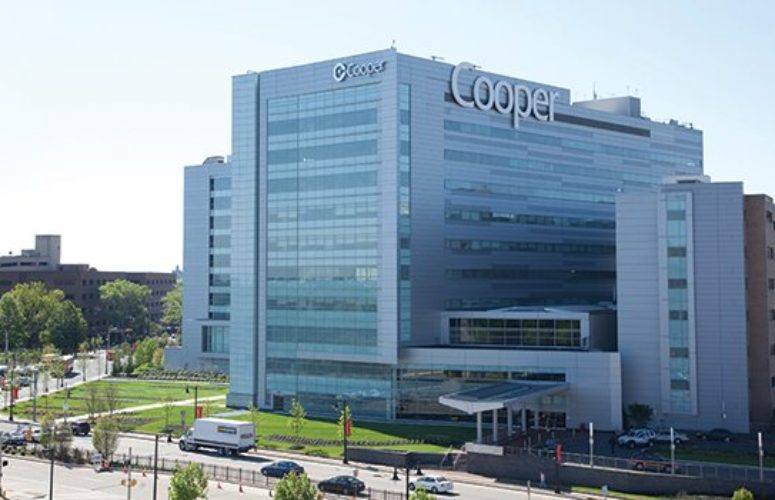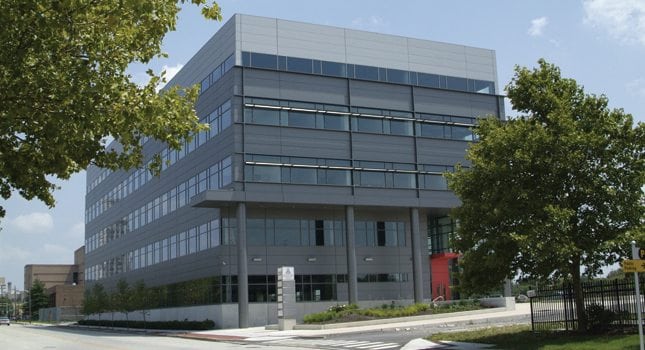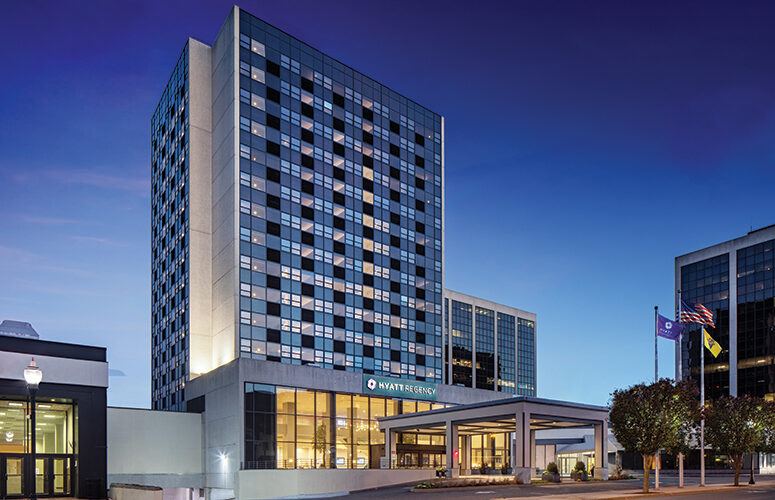
Spotlight: Camden Rising
From powerful projects to inspiring initiatives, the redevelopment of Camden is alive and well.
By Jim Pytell, Assistant Editor On Apr 10, 2017“In a dream, I saw a city invincible.”
This excerpt, from Walt Whitman’s poem “I Dream’d in a Dream,” can be found engraved on the south face of Camden’s city hall. It’s a quote that perfectly encompasses the attitude of the city that stands directly across the Delaware River from Philadelphia. With a population of 77,000, Camden is the 12th most populous municipality in New Jersey, and is in the midst of an ongoing expedition to the summit of prosperity and revitalization.
The city has endured its hardships, but continues to overcome.
“With success come challenges. Although Camden has experienced unprecedented growth and economic investment, the job is not done,” Mayor Dana Redd says. “We realized early on that we must take a holistic approach to redevelopment and the revitalization of the city. It’s not just about changing or improving the physical, brick-and-mortar environment through development, but it’s also just as important to invest in human capital and the residents of Camden.”
The city is home to a waterfront with a gorgeous 1.5-mile promenade, which attracts more than 3 million people to the city each year. Along the river, you’ll find concert venues, a minor league baseball stadium, Adventure Aquarium and countless events taking place throughout the year.
New companies are moving in, existing institutions are completing exciting expansion projects and everyone is doing their best to give back to – and build up – the community, understanding the importance of the families and individuals who make Camden the great city that it is.
“Rutgers has been in Camden since 1950 – longer than that, when you consider that our campus started as the South Jersey Law School in 1926,” Mike Sepanic, associate chancellor for external relations, Rutgers University–Camden, says. “Since that time, we have been a true anchor institution for Camden. We attract generations of young people and many of the brightest researchers in the world into the city. Our presence signals to everyone that Rutgers is committed to Camden’s growth.”
Higher education institutions such as Rutgers and Rowan University play major roles in the strengthening of the fabric of the city, both from an urban development and economic perspective. Currently, the Rutgers Nursing and Science Building is nearing completion on the Camden campus and is set to be finished this month.
Sepanic says the $62.5-million project is being financed, in part, by proceeds from the “Building Our Future Bond Act,” a $750-million loan and grant program overwhelmingly approved by New Jersey voters in a 2012 ballot referendum. Located at Fifth and Federal streets in Camden, the 100,000-square-foot facility connects Rutgers University–Camden and the city’s University District with Cooper University Hospital, the Coriell Institute for Medical Research, and the Cooper Medical School of Rowan University, creating an eds-and-meds corridor that will strengthen the city as a destination for cutting-edge science and health research and learning.
These eds-and-meds industries serve as a gigantic economic engine by providing a significant number of jobs to the city. According to a recently released economic impact report, “The Camden Higher Education and Healthcare Task Force,” eds-and-meds accounted for more than $2 billion in economic impact in 2014.
“The Health Sciences Building being constructed by the Rowan University/Rutgers University–Camden Board of Governors is another big piece of the eds-and-meds corridor,” Sepanic says. “That facility will allow Rutgers–Camden scientists to conduct their path-defining research in state-of-the-art labs that will promote collaboration with researchers from Cooper University Hospital, the Cooper Medical School, and Rowan University. Better still, it will help to cement Camden’s growing global reputation as a center for innovation in the biosciences.”
Over the last several years, Cooper University Hospital has completed a number of exciting expansion projects in the city as well, including: the $220-million, 10-story Roberts Pavilion tower expansion in 2008; the opening of Cooper Medical School of Rowan University in 2012; the MD Anderson Cancer Center at Cooper, which opened in 2013; two new inpatient units in the Roberts Pavilion, and the Janet Knowles Breast Cancer Center at MD Anderson Cooper in 2015; and the opening of four new operating rooms suites, a new inpatient oncology unit, a new cardiac catheterization laboratory, and an expanded infusion center at MD Anderson Cooper in 2016.
“The residents of Camden and the region benefit from having access to a leading academic tertiary care hospital and the only state-designated Level 1 trauma center,” George E. Norcross III, chairman, board of trustees, Cooper University Health Care, says. “As an anchor institution and a major employer in the city, Cooper’s presence draws tens of thousands of people to Camden, providing exciting new economic opportunities. The continued expansion of the Cooper Health Sciences Campus and the influx of people to the city is a magnet drawing other industries and capital investments in Camden.”
In addition to bringing in new economic opportunities by continuing to grow, eds-and-meds institutions are also aiding in the strengthening of existing communities and families within the city.
Camden County College (CCC), which is consistently ranked among the nation’s top colleges and universities in associate degree completion, uses its Gateway to College program to provide scholarships for students in the Camden City School District who have not completed high school, but have a desire to get back on track. This innovative program provides a second chance for 16-to-20-year-olds to earn a high-school diploma and college credits to further incentivize their pursuit of an associate degree or vocational certificate.
The school also implemented the “Rutgers at CCC” program that allows students to earn a two-year degree at CCC, and then transfer their credits to Rutgers Camden, significantly lowering tuition costs.
“There has never been a time in our nation’s history when a college education has been more critically important in an individual’s efforts to earn a living wage, and CCC stands ready to help in that process,” Donald Borden, Camden County College president, says. “Our partnership with Rutgers–Camden provides an opportunity for students to earn a four-year bachelor’s degree at a much lower cost and, in many cases, tuition-free.”
In addition to attracting top-tier talent in the medical fields, area hospitals such as Virtua Camden aim to help the community by ensuring that traditionally underserved areas have access to high quality healthcare.
“Our strong presence in the city of Camden is among the best examples of our commitment to healthcare access for all,” Virtua President and CEO Richard P. Miller says. “A large campus and hundreds of employees support thousands of area residents with health and dental care and social services.”
Virtua subsidized more than $52.7 million in care for the uninsured in 2015, and provided or supported health improvement programs with an additional $24.5 million throughout the region.
“We remain focused on the future healthcare needs of our community,” Miller says. “We continue to plan the programs that are most beneficial to the population we serve, with a focus on cancer treatment and chronic illnesses like diabetes.”
Organizations such as Cooper’s Ferry Partnership (CFP) play a huge role in the ongoing redevelopment efforts in Camden. The organization works to establish public and private partnerships to effect sustainable economic revitalization and promote Camden as a place to live, work, visit and invest.
Susan Bass Levin, co-chair, board of directors of Cooper’s Ferry Partnership, speaks to the numerous accomplishments that her organization achieved in 2016.
“We welcomed the Philadelphia 76ers to their new practice facility on the waterfront; we joined Liberty Property Trust in breaking ground for One Water Street – a billion-dollar office project that will serve as the corporate headquarters of American Water; and we marked the expansion of MD Anderson Cancer Center at Cooper with the opening of a new inpatient oncology unit,” she adds. “We also launched the Camden Construction Career Initiative to train Camden residents for construction jobs and partnered in establishing the Camden Health and Athletic Association to expand health and athletic programs for Camden children.”
Cooper’s Ferry Partnership has been the catalyst for attracting a number of new businesses to move their corporate headquarters to Camden, including Contemporary Graphic Solutions/Rondo-Pak, Holtec International, and Subaru of America, Inc.
“These new employers will provide thousands of new jobs while the construction of their facilities will create an opportunity for new careers for Camden residents,” Anthony J. Perno III president and CEO of Cooper’s Ferry Partnership, says.
Camden seems to be getting stronger each year, with optimism and progress growing exponentially. A pull to invest in the area is getting more and more contagious.
“We are very pleased to be moving to Camden for the next stage in our development,” Thomas J. Doll, president and CEO of Subaru of America, says. “We want to be in on the ground floor for the amazing redevelopment of the Camden area. We want to be part of it, as a catalyst and a contributor. We know that our presence in Camden will only encourage other businesses to come and to invest in the area.”
Subaru has partnered with local organizations such as Meals on Wheels and New Visions Homeless Day Shelter, and often involves employees serving as volunteers. In Camden alone, Subaru has donated more than $800,000 to worthy causes.
The move for Subaru consolidates four South Jersey facilities into one campus, and puts its 600 regional employees together for the first time. Doll says that many of the company’s employees live in and raise families in the region and that they spend around $1 million per year within three miles of work.
Adjacent to Subaru’s building is Campbell Soup Company headquarters, which has called Camden home since 1869. Campbell’s has continuously been involved in helping the surrounding community, and has initiatives such as Campbell’s Healthy Communities. This $10-million, 10-year initiative is directed toward measurably improving the health of young people in Campbell’s hometown communities.
American Water Works Company also recently broke ground for its new headquarters at the Camden Waterfront. The five-story, 220,000-square-foot facility will house more than 600 employees, consolidating four different locations in southern New Jersey, and is set to be opened in late 2018. Mayor Redd says that the project signifies a private investment of $1 billion in the city.
Another organization that has helped spearhead the city’s revitalization is the New Jersey Economic Development Authority (EDA), which has the Grow NJ Assistance Program, that affords businesses that create or retain jobs the ability to get tax credits based on various criteria.
Under the Economic Opportunity Act, Camden is considered a Garden State Growth Zone (GSGZs) – defined as a New Jersey city with one of the lowest median family incomes based on the 2009 American Community Survey from the US Census.
The EDA recently acted to expand support of small business growth in GSGZs through the creation of the Business Lease Incentive (BLI) and Business Improvement Incentive (BII) programs, affording further tax credits to Camden businesses.
Finally, at the Delaware River waterfront, the port industry is expected to see an increase in business for the third consecutive year at its various facilities, including the Joseph A. Balzano and Broadway Marine terminals in the Port of Camden.
A study conducted in 2010 on the economic benefits that the South Jersey Port Corporation (SJPC) provides directly and indirectly, revealed that some 24,605 residents in the Delaware Valley region were linked to cargo and vessel activity at the terminals. Cargo movement generated 2,446 direct jobs.
Though there are no figures for 2016, Kevin Castagnola, CEO and executive director of the SJPC, says the 2010 numbers could easily be increased by “50 percent to 65 percent … maybe 75 percent.”
By the end of 2017, the Camden port will be dredged to 45 feet. This deepening will allow bigger vessels into the port, allowing more business to be had.
The projects, programs and initiatives detailed in this article are just a small sample of the many efforts going on in Camden at this moment. Sepanic describes a genuine buzz surrounding everything going on in the city, and says the opportunities for businesses to become a part of the growth trajectory are unparalleled.
“I can confidently say we have made great progress during my administration and have completed 16 years of work over the past seven plus years,” Mayor Redd says. “Great things have been achieved already in that short period of time and we expect to continue to do great things for many more years to come.”
Related Articles:






